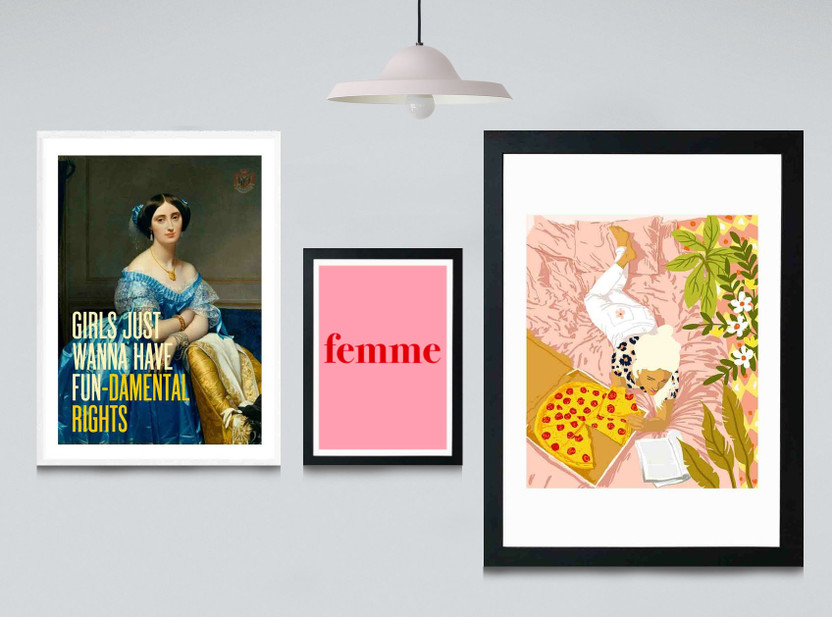A look into feminist art
Posted by East End Prints on 21st Jul 2021
Feminism can often feel like a controversial topic, mainly because the view we have of it is constantly changing. It’s a movement that adapts in order to remain progressive and encompasses many of the most relevant themes around equality today. At its heart, feminism is about social justice and choice, not just for women, but for everyone. Under a feminist agenda anyone anywhere should be given the opportunity to present themselves as they choose and to act and behave in the way that they want to. Given that this is the basis of feminism, exploring the key themes that inspire this genre of creativity is the first place to start when it comes to feminist art.
Deconstructing gender
There are two themes around gender that are often explored in feminist art. The first is what it means to be a woman in times where equality has been scarce and women were often viewed as less than men, even as their property. The second arises from the idea of gender as a social construct and how this is much more fluid than we often imagine and can vary between people and cultures. Feminist art often focuses on ideas around smashing the patriarchy and tends to be supportive of those who embody their own gender, regardless of sex, and go against male/female binary and male superiority. See Judy Chicago, The Dinner Party as a prime example.
Exploring sexuality
Feminist art often moves away from the heteronormative and explores freedom of sexual expression. Gran Fury’s Kissing Doesn’t Kill piece is a great example of intersectional feminism and the way that feminist art supports more freedom of sexual expression. It brings many different themes to the table, from same-sex to interracial couples.
Disability justice
One of the driving forces behind feminism is equality for all and there are many pieces that have focused on the myths and claims that have been applied to those with a disability over the years. Feminism takes the view that a disability may cause limitations but that it’s actually the social, political and physical structures that we live within that impose those limitations. It encourages us to move away from trying to classify people with disabilities, to ‘other’ or dehumanise them.
Anti-capitalism
The way that capitalism relates to equality is often complex. But what is simple is that capitalism always goes hand in hand with racism and sexism. Women and people of colour are often paid less than men, more likely to live in poverty and less likely to have a positive value placed on their contributions in a capitalist society. Money is power in this context and strengthens the patriarchy and its views on women and what they are worth. See The Gorilla Girls Billboard 1989 for a great example of feminist art that calls this out.
Feminist art is not just aesthetically effective and fascinating but also has a huge amount to contribute to discussions around race and capitalism, as well as when it comes to inspiring disruption of the status quo. Check our online store for amazing feminist art prints or pop down to our beautiful shop on Brick Lane in London.

